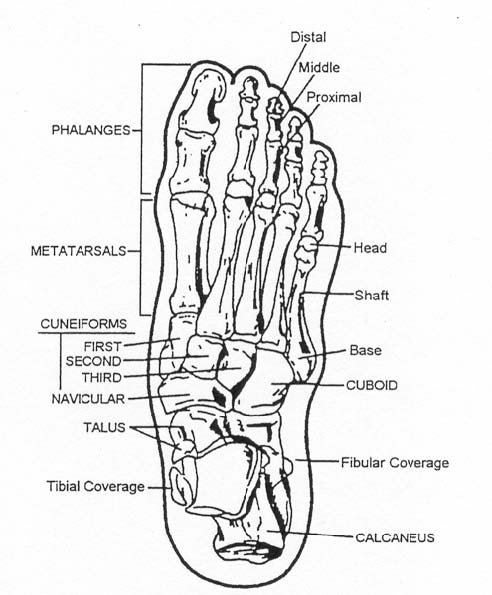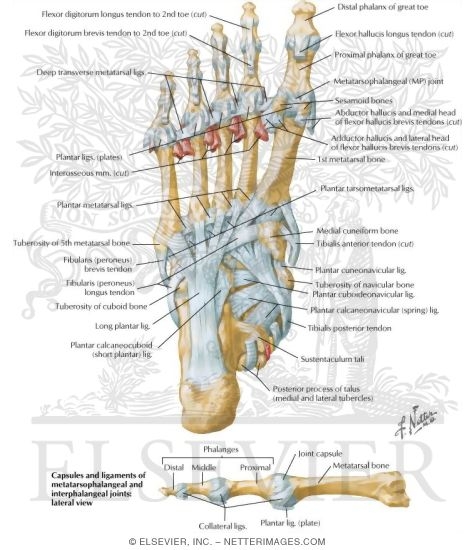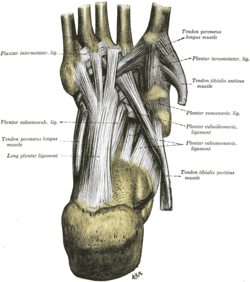Metatarsophalangeal articulations
As metatarsophalangeal joints ( articulationes metatarsophalangeae ) refers to the joints between the heads of the metatarsal bones (caput ossis metatarsal ) and the respective base of the first member of the toe bone (base of the proximal phalanx ). In ungulates the metatarsophalangeal joints are called fetlock joint.
The respective base of the proximal phalanx is the acetabulum, which is supplemented by the plantar ligament faserknorplig reshaped. The acetabulum is sole side is dominated by the much larger joint head of the caput ossis metatarsi. On both sides of each toe joint is stabilized by a collateral ligament. On the dorsum of the foot, the first metatarsophalangeal joints are covered by the dorsal aponeurosis. The metatarsophalangeal joints are ball joints, but limited in its range of motion. The dorsiflexion range active up to an angle of 70 °, passive to 90 °. The degree of the diffraction is enough active to an angle of 50 °, passive bin 50 °. In the state of the joints are in slight dorsiflexion. However, lateral movements are hardly possible in small children well, in adults
Plantar side of the first metatarsophalangeal joint in humans are two small sesamoid bones, which are embedded in the tendons of the abductor hallucis adductor hallucis respectively. In the four-footed mammals are located on the soles of the feet side of the metatarsophalangeal joint two sesamoid bones per toe beam, the Ossa sesamoidea proximalia to which attach the interossei and which serve as bearing for the deep flexor tendon.
A common deformity of the first metatarsophalangeal joint is the hallux valgus.










